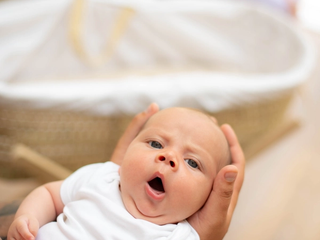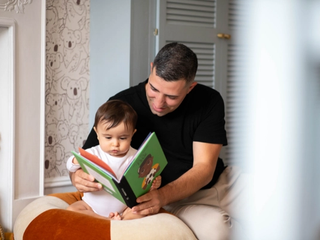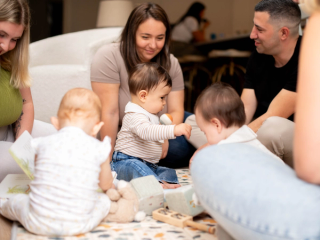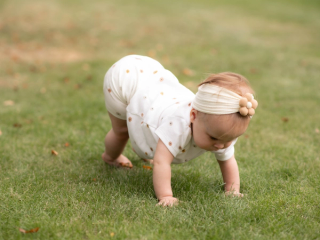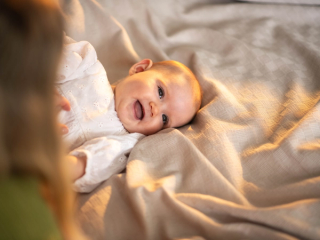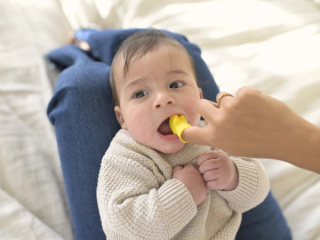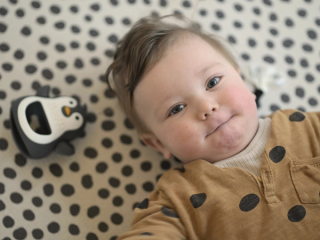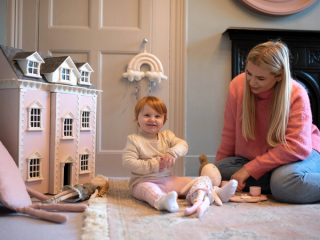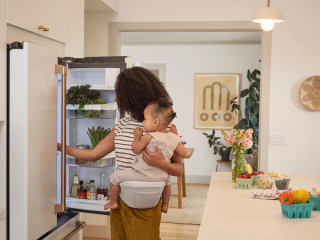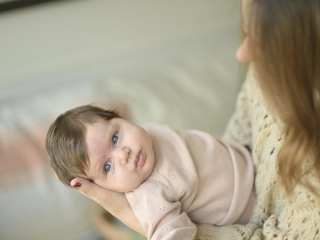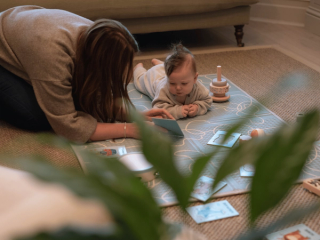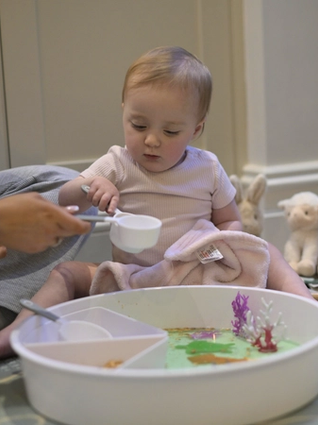
- Home
- Advice Hub
- Baby
- Bonding & Development
- The Benefits Of Sensory Experiences
The benefits of sensory experiences for your little ones
A sensory experience could be as simple as feeling some trickling water or smelling some fresh herbs, or it could be a bit more thought through, such as setting up a sensory bin, either way, the idea behind it is the same – we are stimulating our baby’s senses to help them learn and develop.
A sensory experience is anything that appeals to our senses. Typically people think we have five senses, but we actually have many more! For the purpose of this article I’m going to talk about the five senses: sight, touch, taste, hear and smell.
Sensory experiences are a great way for babies and young children to make sense of the world around them, and to use their senses to discover and build connections within their brain. When we explore something new, or learn something with our senses in an active multi-sensory way we are more likely to remember it and this strengthens new knowledge and skill development in your baby’s developing brain. A sensory experience could be as simple as feeling some trickling water or smelling some fresh herbs, or it could be a bit more thought through, such as setting up a sensory bin, either way, the idea behind it is the same – we are stimulating our baby’s senses to help them learn and develop.
You can easily incorporate sensory experiences into your little one’s day. For example, when you are cooking or putting clean washing away, why not let you baby explore the different smells? Or when you’re walking around the house why not find safe items for them to touch, roll and throw?
I really recommend using an under the bed storage box for sensory play activities with a baby. This is because they’re easy to store but also you can sit your baby in them for a whole body sensory experience!
Five sensory experiences you might want to explore with your baby:
- Use feathers to gently tickle your baby. Sing nursery rhymes as you tickle them. Once they’re sitting up you could place them in a storage box (as mentioned above) full of feathers to really get an all over body sensory experience!
- Place mirrors in places your baby goes regularly so they begin to see their reflection often. Look in the mirror with them and pull funny faces, point to them and say their name and carefully move them forwards and backwards from the mirror.
- Tie some metal spoons carefully to some black, white and red ribbon. Wave and dangle the ribbons in front of them to develop their visual tracking and clang them together to make the spoons make a sound for your baby to tune in to.
- Place crinkled up newspaper under your baby’s feet so when they kick they can make their own noise and feel a new sensation with their feet.
- Get outside! Take an everyday activity and do it in new surroundings. For example, read a book under a tree at the park or sing songs at the beach while they have their tiny toes touching the sand.
Sensory experiences can be a lovely way to bond with your baby, and best of all they don’t have to cost you a thing. Don’t feel you need to buy specially developed toys when there are so many sensory experiences waiting to be had in your home. Just experiment, and have fun!
Advice & tips

Want to read more? Join the HiPP BabyClub for full access to this article.
As a BabyClub member, you'll get access to a range of exclusive benefits, including:
Monthly competitions
Discounts from our Partners
Expert advice tailored to your little one's age
Weaning recipes
HiPP shop discounts*
*10% off HiPP's online shop does not apply to our First Infant, Anti-Reflux or Comfort Formula Milk.
Important notice: Breastfeeding is best. Follow on milk should only be used as part of a mixed diet from 6 months. Talk to a healthcare professional.




